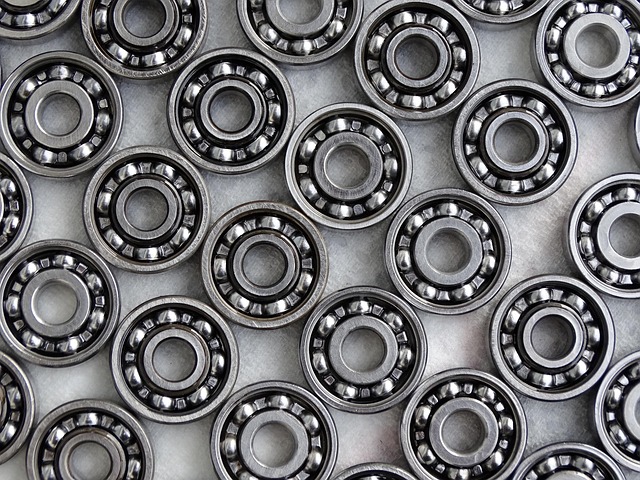Introduction: Alzheimer's Disease and Protein Glycation
Alzheimer's Disease (AD) is a progressive neurodegenerative disorder characterized by cognitive decline and memory loss. While the exact causes of AD are still under investigation, aberrant protein modification processes, particularly glycation, are increasingly recognized as significant contributors to its pathogenesis. Glycation, also known as non-enzymatic glycosylation, is the spontaneous reaction between reducing sugars, such as glucose, and proteins or lipids. This process leads to the formation of Advanced Glycation End products (AGEs), which can alter protein structure and function, contributing to cellular dysfunction and neurodegeneration in AD.
What is Protein Glycation and AGEs?

Protein glycation is a non-enzymatic reaction initiated by the attachment of a reducing sugar (like glucose or fructose) to a protein. This initial step forms a Schiff base, which undergoes further rearrangement to form a more stable Amadori product. Over time, these Amadori products can undergo a series of complex reactions, ultimately leading to the formation of AGEs. These AGEs accumulate in various tissues and organs, including the brain, and can exert detrimental effects through several mechanisms.
# Example representing AGE formation
# (This is a simplified representation)
import numpy as np
class Protein:
def __init__(self, name):
self.name = name
self.glycated = False
self.age = 0
def glycation(protein):
protein.glycated = True
print(f'{protein.name} has been glycated.')
return protein
def age_formation(protein):
if protein.glycated:
protein.age = np.random.randint(1,10) #Simplified age value
print(f'AGE formed on {protein.name}, AGE value: {protein.age}')
return protein
else:
print(f'{protein.name} is not glycated.')
my_protein = Protein("AmyloidBeta")
glycation(my_protein)
age_formation(my_protein)The Role of AGEs in Alzheimer's Disease Pathogenesis

AGEs contribute to AD pathogenesis through several key mechanisms: 1. **Protein Cross-linking:** AGEs can cross-link proteins, leading to the formation of insoluble aggregates, such as amyloid plaques and neurofibrillary tangles, which are hallmarks of AD. 2. **Receptor for AGEs (RAGE) Activation:** AGEs bind to RAGE, a multi-ligand receptor expressed on various cells, including neurons and microglia. RAGE activation triggers inflammatory pathways and oxidative stress, contributing to neuronal damage and cognitive decline. 3. **Impaired Protein Degradation:** Glycation can impair the degradation of proteins by the proteasome and autophagy pathways, leading to the accumulation of damaged and dysfunctional proteins within cells. 4. **Mitochondrial Dysfunction:** AGEs can accumulate in mitochondria, impairing their function and increasing the production of reactive oxygen species (ROS), further exacerbating oxidative stress and neuronal damage.
Glycation Targets: Amyloid-β and Tau
Two of the most prominent proteins implicated in AD, Amyloid-β (Aβ) and tau, are susceptible to glycation. Glycation of Aβ can promote its aggregation into amyloid plaques, while glycation of tau can lead to the formation of neurofibrillary tangles. Studies have shown that glycated Aβ and tau exhibit altered biochemical properties and increased toxicity compared to their non-glycated counterparts. The glycation sites often relate to lysine and arginine residues.
\documentclass{article}
\usepackage{amsmath}
\begin{document}
\section*{Rate of AGE formation}
Let $G(t)$ represent the concentration of AGEs at time $t$.
The rate of AGE formation can be modeled as:
$$\frac{dG(t)}{dt} = k_g [Glucose] [Protein] - k_d G(t)$$
Where:
* $k_g$ is the glycation rate constant.
* $[Glucose]$ is the concentration of glucose.
* $[Protein]$ is the concentration of protein.
* $k_d$ is the degradation rate constant for AGEs.
\end{document}Therapeutic Strategies Targeting Glycation in AD
Given the significant role of glycation in AD pathogenesis, therapeutic strategies targeting glycation pathways have emerged as potential interventions. These strategies include: * **AGE Inhibitors:** Compounds like aminoguanidine and pyridoxamine can inhibit AGE formation. * **RAGE Blockers:** Blocking the interaction of AGEs with RAGE can reduce inflammation and oxidative stress. * **Lifestyle Modifications:** Dietary interventions aimed at reducing glucose levels and increasing antioxidant intake can help mitigate glycation and its effects. * **Advanced therapeutic research:** Researchers are investigating new targets to improve clearance of existing AGEs.
Further Research and Future Directions
Continued research is needed to fully elucidate the complex interplay between protein glycation and AD. Future studies should focus on identifying specific glycation sites on key proteins, developing more effective AGE inhibitors and RAGE blockers, and investigating the potential of personalized interventions based on an individual's glycation profile. Furthermore, longitudinal studies are warranted to assess the long-term effects of lifestyle modifications on glycation and AD risk.
- Investigating the impact of specific AGEs on neuronal function.
- Developing novel diagnostic tools for early detection of altered glycation patterns.
- Exploring the role of genetic factors in influencing glycation susceptibility.